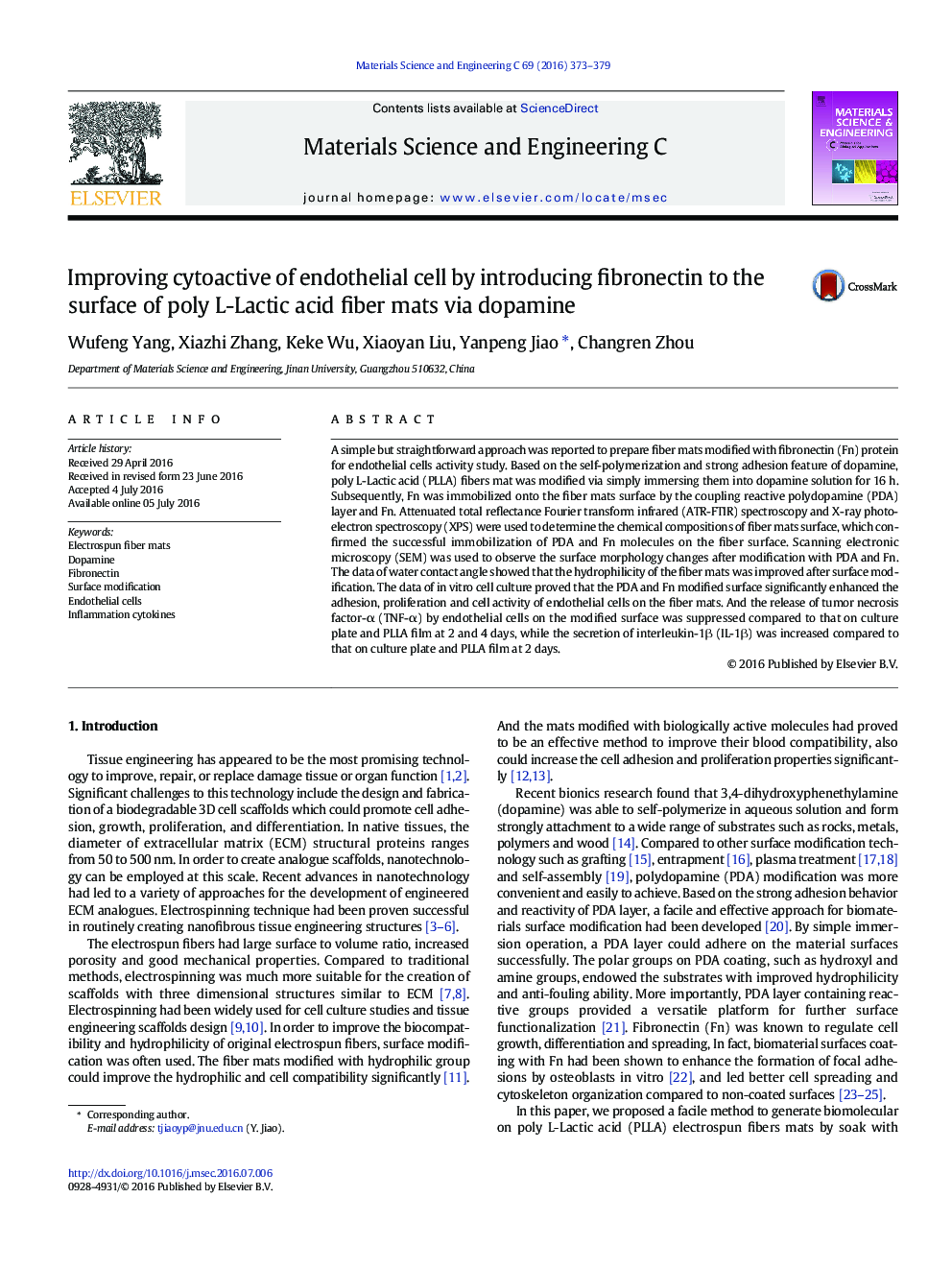| Article ID | Journal | Published Year | Pages | File Type |
|---|---|---|---|---|
| 1427865 | Materials Science and Engineering: C | 2016 | 7 Pages |
•Fibronectin (Fn) was grafted on PLLA fiber surface mediated by polydopamine coating.•Fn modified PLLA fiber enhanced the adhesion, proliferation of endothelial cells.•Fn and polydopamine modified PLLA fiber could adjust the release of inflammatory factor.
A simple but straightforward approach was reported to prepare fiber mats modified with fibronectin (Fn) protein for endothelial cells activity study. Based on the self-polymerization and strong adhesion feature of dopamine, poly L-Lactic acid (PLLA) fibers mat was modified via simply immersing them into dopamine solution for 16 h. Subsequently, Fn was immobilized onto the fiber mats surface by the coupling reactive polydopamine (PDA) layer and Fn. Attenuated total reflectance Fourier transform infrared (ATR-FTIR) spectroscopy and X-ray photoelectron spectroscopy (XPS) were used to determine the chemical compositions of fiber mats surface, which confirmed the successful immobilization of PDA and Fn molecules on the fiber surface. Scanning electronic microscopy (SEM) was used to observe the surface morphology changes after modification with PDA and Fn. The data of water contact angle showed that the hydrophilicity of the fiber mats was improved after surface modification. The data of in vitro cell culture proved that the PDA and Fn modified surface significantly enhanced the adhesion, proliferation and cell activity of endothelial cells on the fiber mats. And the release of tumor necrosis factor-α (TNF-α) by endothelial cells on the modified surface was suppressed compared to that on culture plate and PLLA film at 2 and 4 days, while the secretion of interleukin-1β (IL-1β) was increased compared to that on culture plate and PLLA film at 2 days.
Graphical abstractFigure optionsDownload full-size imageDownload as PowerPoint slide
